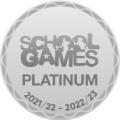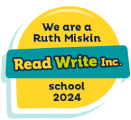Computing
Intent
All pupils at Wistaston Academy have the right to have rich, deep learning experiences that balance all the aspects of computing. With technology playing such a significant role in society today, we believe children must be taught and feel they are able to participate effectively and safely in this digital world. We intend to build on the current skills of our staff and develop a high-quality computing curriculum that equips pupils with the skills and knowledge to live safely in an increasingly digital British society. The computing curriculum equips children with the cultural capital needed to be active members of society. It has been designed to be ambitious and meet the needs of all pupils, including disadvantaged pupils and those with SEND. Whilst at WA, pupils learn to evaluate, adapt and apply information technology, including new or unfamiliar technologies, analytically to solve problems. Computing has deep links with literacy, mathematics, science, PHSE and design and technology, and provides insights into both natural and artificial systems. By the time children leave WA, they become digitally literate so that they are able to express themselves and develop their ideas through information and computer technology at a level suitable for the future workplace and as active participants in a digital world. Our children will develop a love of computing and be provided with the ability to enhance their knowledge, skills and understanding through different types of media whilst keeping safety at the forefront of their minds.
The aims of our Computing curriculum are to develop pupils who:
- Are responsible, competent, confident and creative users of information and communication technology.
- Can analyse problems in computational terms, and have repeated practical experience writing computer programs in order to solve such problems.
- Can understand and apply the fundamental principles and concepts of computer science, including abstraction, logic, algorithms and data representation.
- Become digitally literate and are active participants in a digital world.
- Understand the importance of governance and legislation regarding how information is used, stored, created, retrieved, shared and manipulated.
- Have a ‘can do’ attitude when engaging with technology and its associated resources.
- Utilise computational thinking beyond the Computing curriculum.
- Be able to access high-quality texts to enhance their understanding and to encourage pupils to develop a wider love of computing through exploring a range of new and exciting content.
- Understand and follow the SMART E-Safety rules, knowing that these can keep them safe online and be able to minimise risk to themselves and others.
- Know who to contact if they have concerns.
Implementation
The curriculum is led and overseen by a computing lead, who is supported by the STEM pod and works alongside class teachers and teaching assistants. Together they plan, monitor and continually evaluate the computing taught at WA in order to ensure it is effective, exciting and continually improving.
The framework for curriculum planning across the school is guided by the national curriculum and takes the following form:
Early Years Foundation Stage
During the Early Years Foundation Stage (EYFS), children focus on the use of technology to solve problems and produce creative outcomes. In the EYFS, children will be exposed to digital devices such as BeeBots, manoeuvring them around the classroom, so that when they move to year 1, they are already exposed to the device and are able to undertake basic tasks such as writing and testing a simple program.
Computing can be included in all areas of the EYFS:
Understanding the world:
- Role play with both functioning and broken equipment
- Digital cameras and iPads for children to photograph their own learning
Literacy:
- Use of beebots to create stories
- Bee bots to search the local area maps
- Sequencing events
- Typing on a keyboard – using their phonics knowledge
Physical Development:
- Becoming familiar with physical devices such as mouse, keyboard, computer screen.
- Typing out on a real-life keyboard
- Programming in PE – following instructions
Communication and Language:
- Giving precise instructions away from a machine e.g. pretending to be a sandwich making robot
- Giving instructions during PE to come up with rules for a game.
Personal, Social and Emotional Development:
- Voice recorders to record feelings
- Online safety discussions
- Read stories linked to online safety
Expressive arts and design:
- Painting using art-based apps such as doodle buddy.
- Link to other technologies such as creating mats for the beebots.
- Create outfits for a device to wear such as a dress for the beebots.
Mathematics:
- Directional language development using beebots or other devices.
- Number used in precise instructions
Key Stage 1
Through a variety of creative and interesting activities, pupils are expected to know, apply and understand the matters, skills and processes relevant to their age. They will apply their learning to a range of relevant contexts and be encouraged to evaluate their learning throughout.
Throughout the three stands of the Computing Curriculum, pupils at WA will be expected to explore the following subject matters:
Computer Science:
- Understand what algorithms are and how they are implemented as programs on a digital device
- Understand that programs execute by following precise and unambiguous instructions
- Create simple programs both on and off line e.g. BeeBots, giving instructions to a partner
- Begin to debug simple programmes (on and off line)
Digital Literacy and E-safety:
- Use technology to create, organise and store data e.g. to type, delete or space text to read.
- Manipulate and retrieve digital content
- Use technology safely and respectfully
- Keep personal information private
- Identify where to go for help and support if they have concerns about content or contact on the internet or other online technologies such as gaming platforms.
Information Technology:
- Recognise uses of IT beyond school
- Being to present data in a variety of ways and interpret this data to check for accuracy.
- Use a hyperlink to access a website
- Begin to save and open the files we need
Key Stage 2
Through a variety of creative and interesting units, pupils are expected to know, apply and understand the matters, skills and processes relevant to their age. They will apply their learning to a range of relevant contexts (and be encouraged to evaluate their learning throughout.
Throughout the three stands of the Computing Curriculum, pupils at WA will be expected to explore the following subject matters:
Computer Science:
- Use logical reasoning to explain how simple algorithms work and design their own
- Detect simple errors in algorithms and programs (debug) and be able to correct them
- Solve problems by decomposing them in to smaller parts.
- Use sequence, selection and repetition in programs
- Work with variables and various forms of input and output
Digital Literacy and E-safety:
- Use technology safely, respectfully and responsibly
- Recognise acceptable/ unacceptable behaviour
- Identify a range of ways to report concerns about content and contact
- Use and combine media to achieve an outcome e.g. to be informative and be aware of audience, atmosphere and structure to achieve the given outcome.
- Evaluate the effectiveness of their own work and the work of others
- Explain how various internet services are used and their purpose as well as explore how information in transported on the internet.
Information Technology:
- Understand computer networks including the internet
- Explore how they can provide multiple services such as the World Wide Web
- Explore the opportunities they offer for communication and collaboration
- Select, use and combine a variety of software on a range of digital devices to design and create a range of programs systems and content that accomplish given goals
- Goals should include: collecting, evaluating, analysing and presenting data and information.
The curriculum at WA is implemented through:
- A wide variety of enrichment opportunities e.g. STEM Day, Lego league, Digital Leaders and E-safety Day
- The use of high quality CPD opportunities that allow staff to learn through practical sessions e.g. Skill Supply, Teach Computing Local Hub.
- Cross-curricular teaching where computing is used to enhance children’s learning where appropriate.
- Regular feedback from teachers which not only addresses misconceptions around vocabulary and concepts but also deepens, challenges and supports learning.
- The use of regular formative assessment to track progress and identify gaps in children’s computing skills to inform future learning.
- The use of clear and progressive objectives that ensure children build on prior learning from Nursery to Year 6.
- An immersive, language-rich curriculum within which a strong focus is given to the explicit teaching of vocabulary.
- Clear effective planning ensures coverage of the National Curriculum objectives.
- The use of high-quality resources to enhance children’s proficiency.
- Assemblies and class discussions which highlight the importance of online safety.
- Relationships with parents which are beneficial when issues relating to online safety arise, parents can be informed and further information/support is provided if required.
- Differentiation across the Key Stages to reflect the needs of the children and expected outcomes.
- In EYFS, computing is covered throughout all strands of the Early Years Foundation Stage educational programmes as outlined in the Statutory Framework. The computing elements of the framework are implemented throughout the environment as well as within designated areas such as in the Investigation Station and Technology Station. Pupils in the EYFS are also regularly exposed to both online and offline computing opportunities through the interactive whiteboard, use of iPads, exposure to following and making their own sets of instructions and in the outdoor area, creating and taking part in obstacle courses and sequential play.
- In KS1 and KS2, computing is taught across the curriculum within Topic as well as through focused times.
- We have linked with the local High School so that our KS2 pupils are prepared for the transition to KS3.
- Each class have access to quality texts that are linked to areas of computing within their year group. These are available to all pupils and are to be used in lessons as well as for the children to access during Reading for Pleasure time or to take home to explore.
Impact
At Wistaston Academy, we ensure that children are able to develop their understanding of computing so that they become competent in an ever-developing technological world. We support our children to develop a solid and broad understanding of computing in order to apply this to their every day life e.g. debugging programs, using logical reasoning to solve problems and staying safe in a fast-moving digital world. Whilst we strive for an algorithm without bugs or a program that works, we place value on the reflective nature of problem solving and encourage the children to identify bugs in their work, successfully preparing them for their future education. We like to encourage the children to take calculated risks in their learning and use logical reasoning to solve these so they can make a positive contribution to the future of the nation.
Impact is measured by:
- Assessing children’s learning in Computing through an on-going monitoring of children’s understanding, knowledge and skills by the class teacher, throughout the lessons. The assessment is then used to inform differentiation, support and challenge required by others.
- EYFS pupils’ progress is tracked using tapestry observations as well as teacher knowledge using the EYFS framework as guidance. This will tell us if a child is working Below expected, or Expected attainment for their age.
- Summative assessment is conducted termly by class teachers across the school to inform subject leaders of progression or skills and knowledge embedded. This is done using the I Can statements.
At Wistaston Academy, we aim to ensure that that by the end of their time at school:
- Children will be enthusiastic about and enjoy computing.
- Children will develop a sound and coherent understanding of computing
- Children will become increasingly critical and analytical within their thinking, making informed and balanced judgements based upon their knowledge.
- Children will become increasingly aware of how computing has shaped the world in which they currently live.
- Children will develop an understanding of how to stay safe online.
- Children will develop their curiosity, pursuing their own interests and making decisions within computing.
- Over their time at Wistaston Academy, children will have had opportunities to learn about the computing industry through a range of visitors and extra-curricular experiences.
- Children will make connections between what they have previously learned and what they are currently learning which will embed computing knowledge in their long-term memory.
- Disadvantaged pupils and pupils with SEND achieve the best possible outcomes in computing.
- Children will leave WA with the skills, knowledge and attitude that will allow them embrace the next stage in their education.
- Children will develop an interest in the wider world of Computing through high quality, information texts or be given opportunities to read computing fiction and non-fiction books for pleasure. These texts will be related to multiple computing topics and will be available across each year group.
Equal Opportunities and Inclusion
The whole school policy on equal opportunities is adhered to throughout the planning and delivery of Computing lessons. Teachers ensure that all children have access to the full range of Computing activities and use opportunities to challenge stereotypes.
All pupils with Special Educational Needs and/or Disabilities are supported to engage fully with Computing lessons by ensuring fair and equal access to the curriculum. Examples of how this is achieved includes, but is not limited to:
- visual timetables, prompts and learning aids to structure lessons and communicate expectations
- differentiated learning objectives and tasks
- adapted or specialised equipment and resources
- additional adult support
- collaborative and positive peer partnerships
At Wistaston Academy we are committed to every pupil reaching their full potential, so that they are prepared for the challenges they will face beyond this stage of their education and long into the future.





